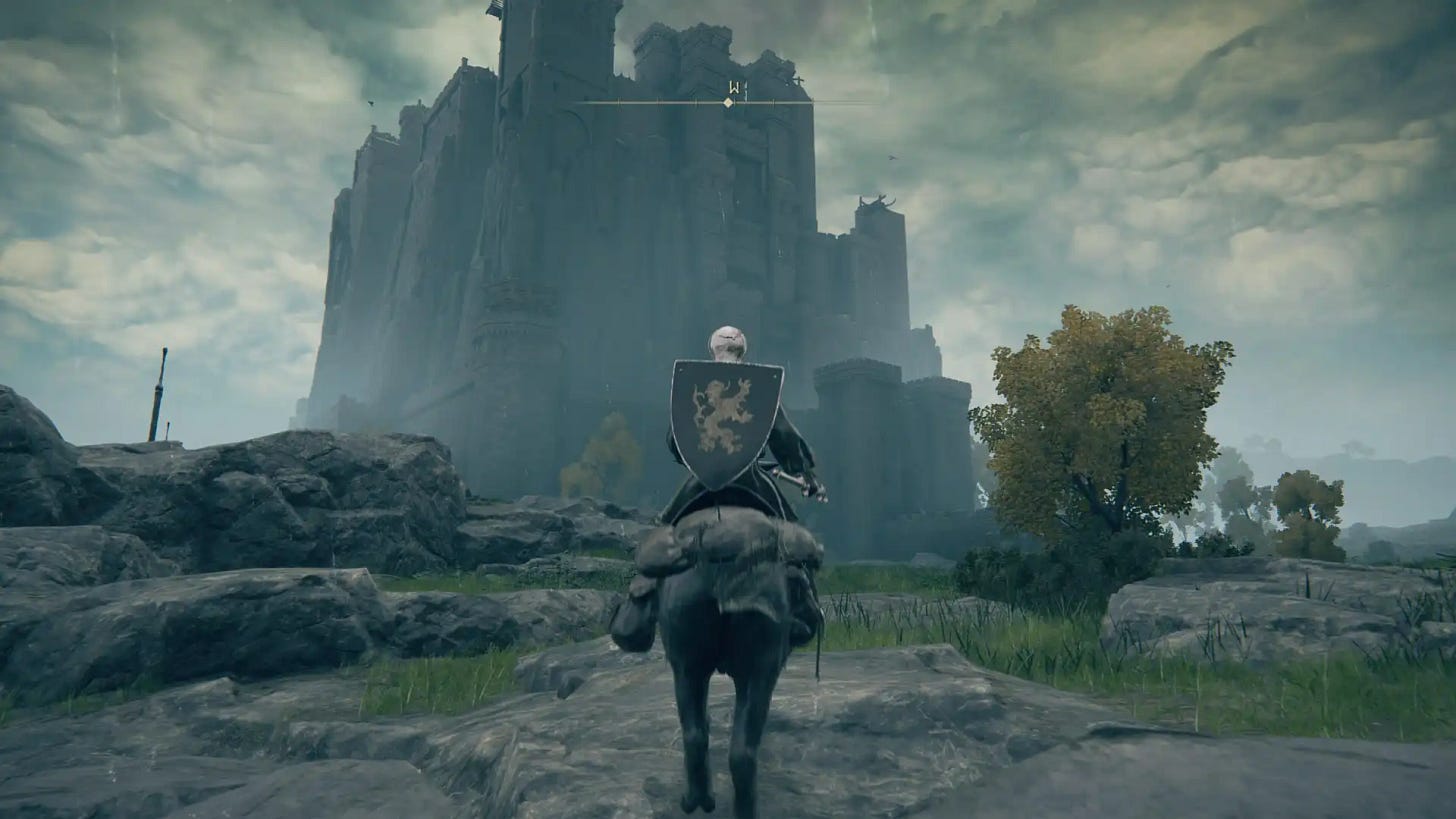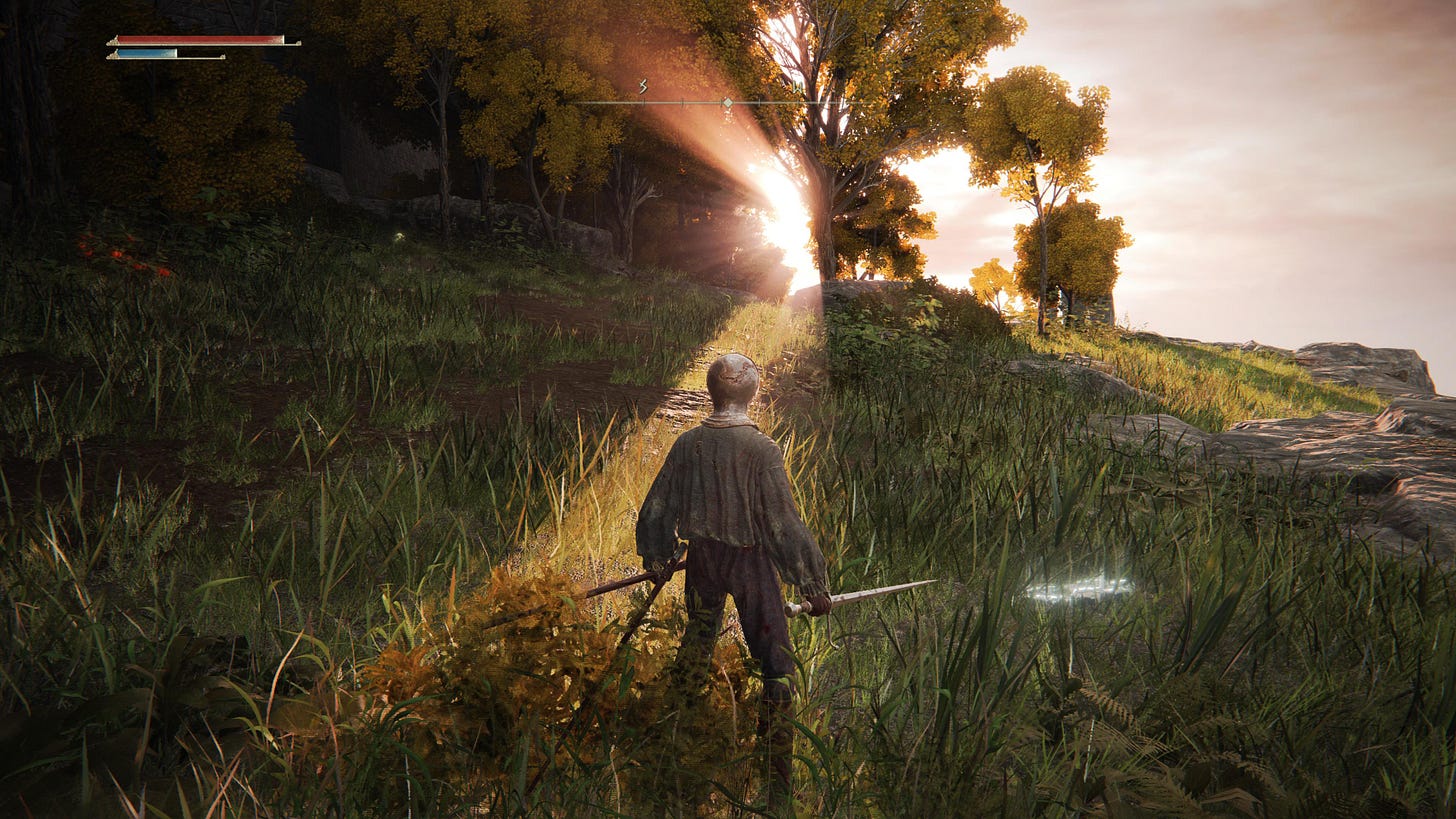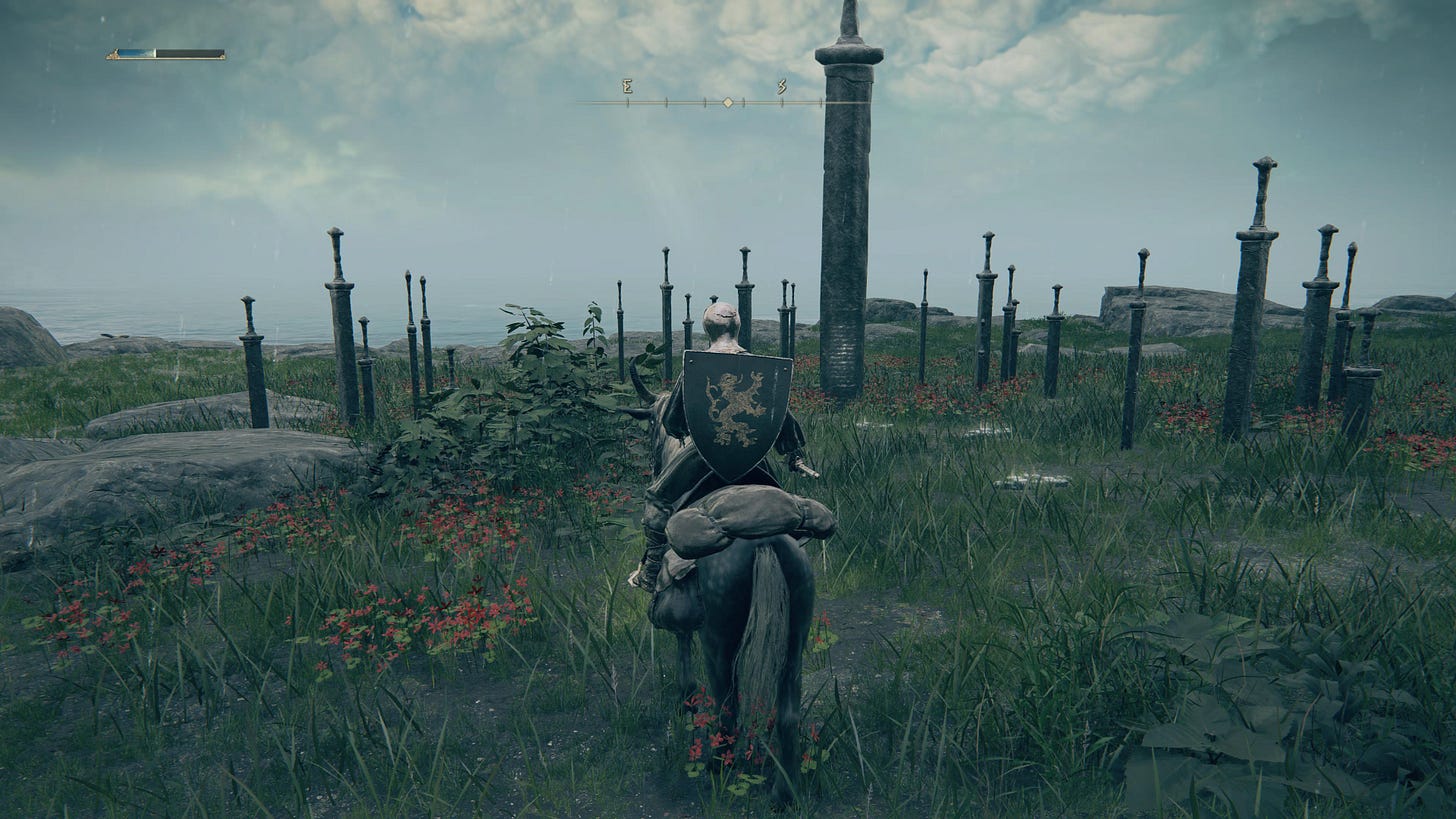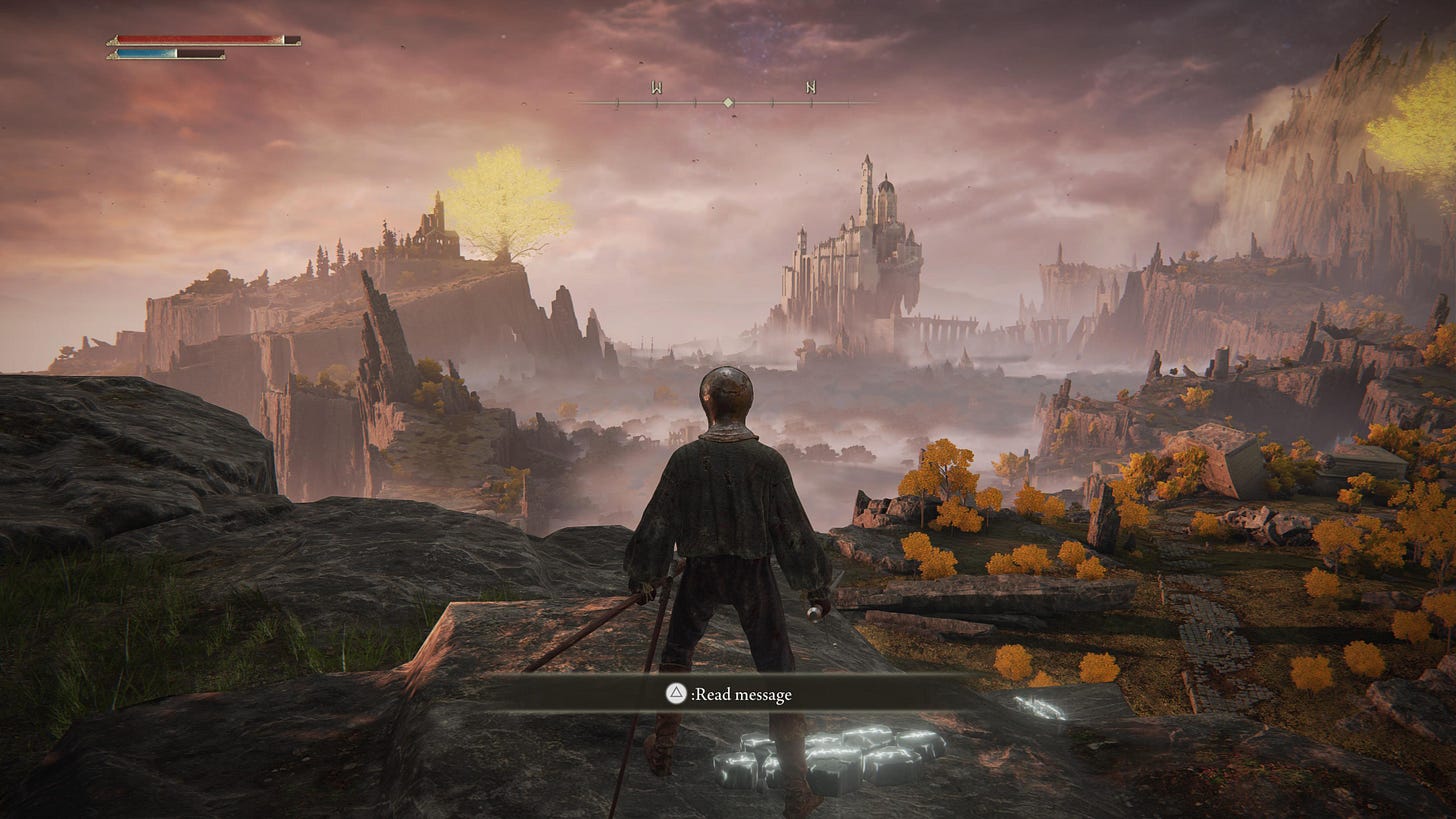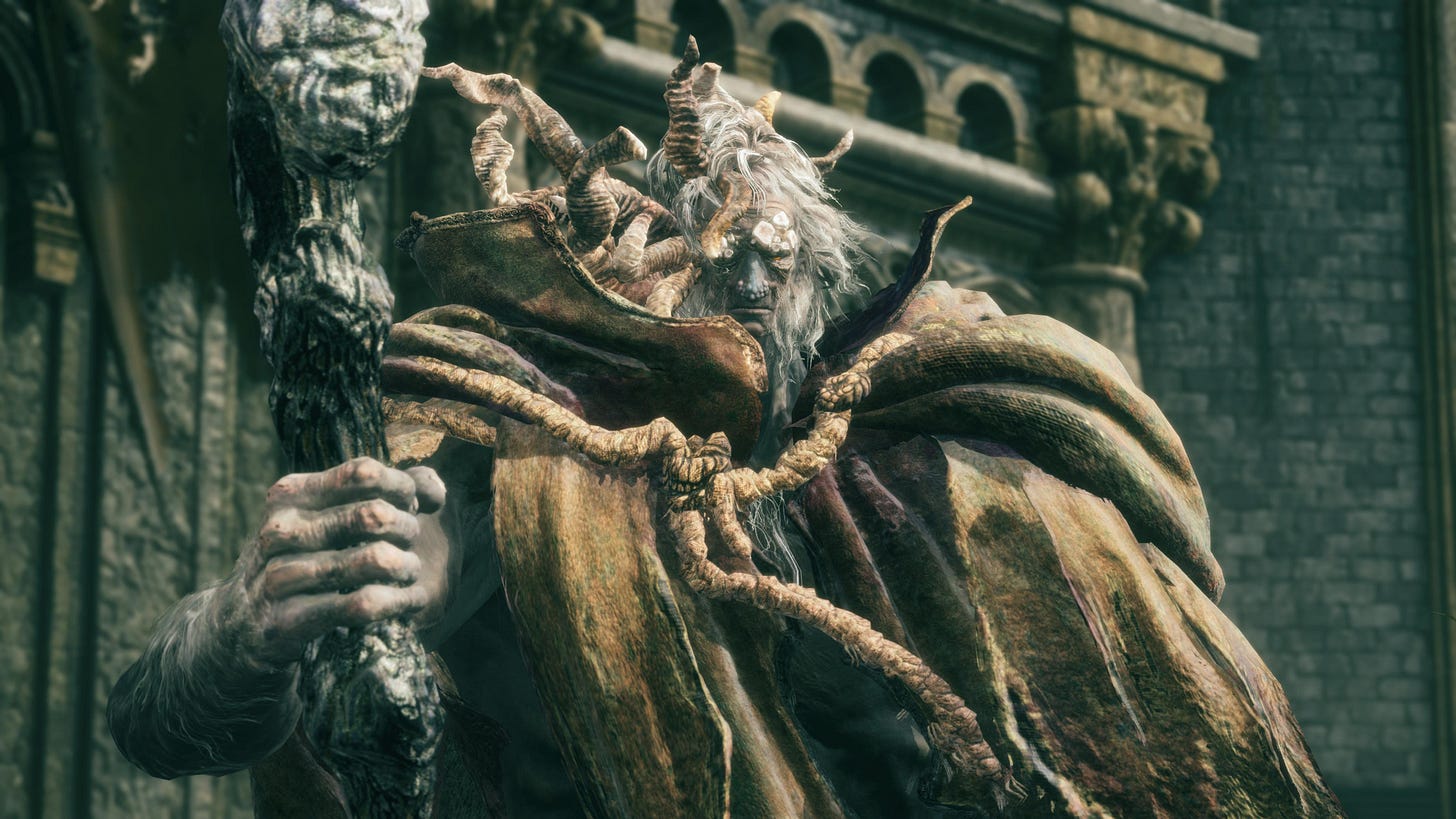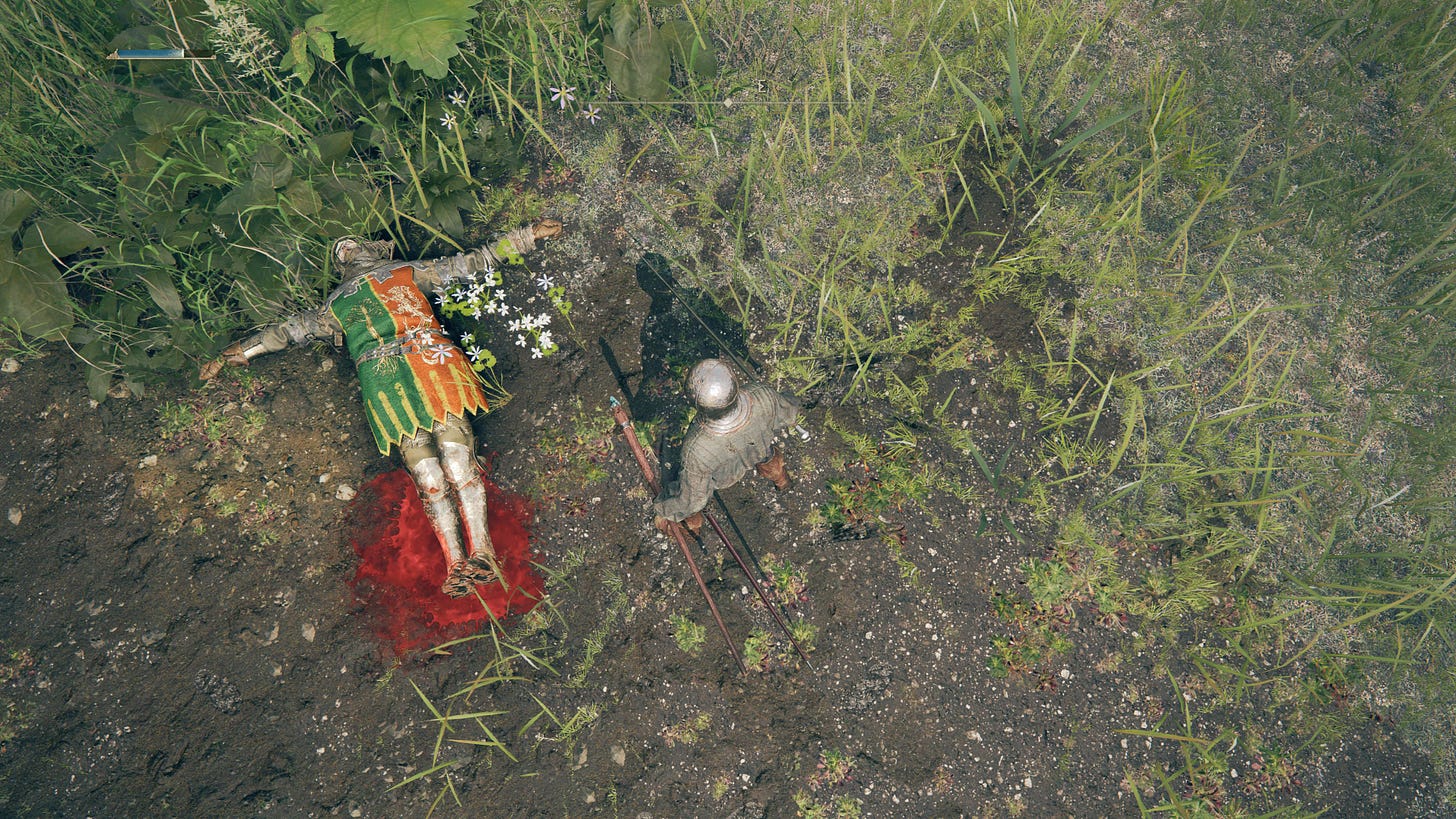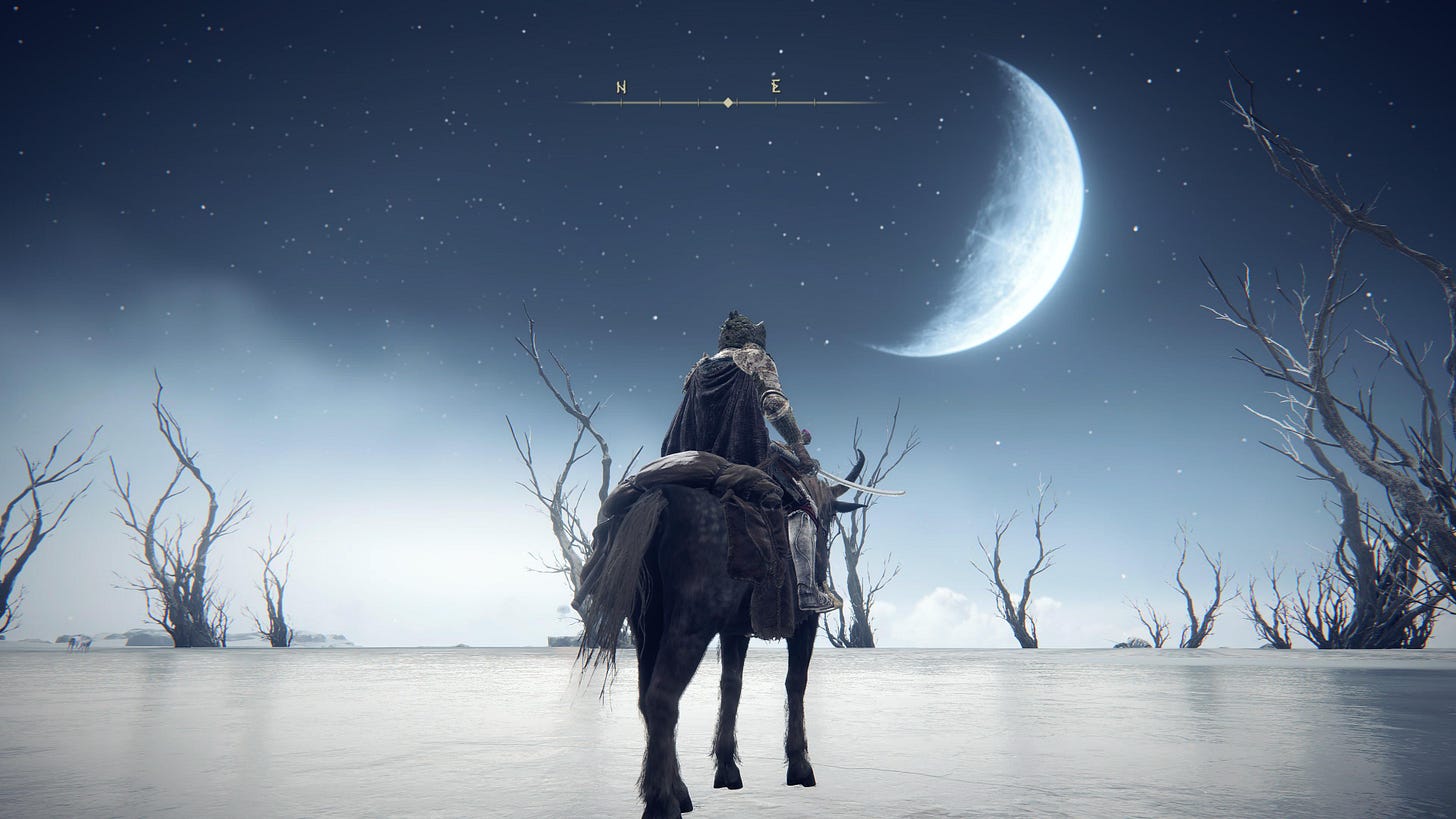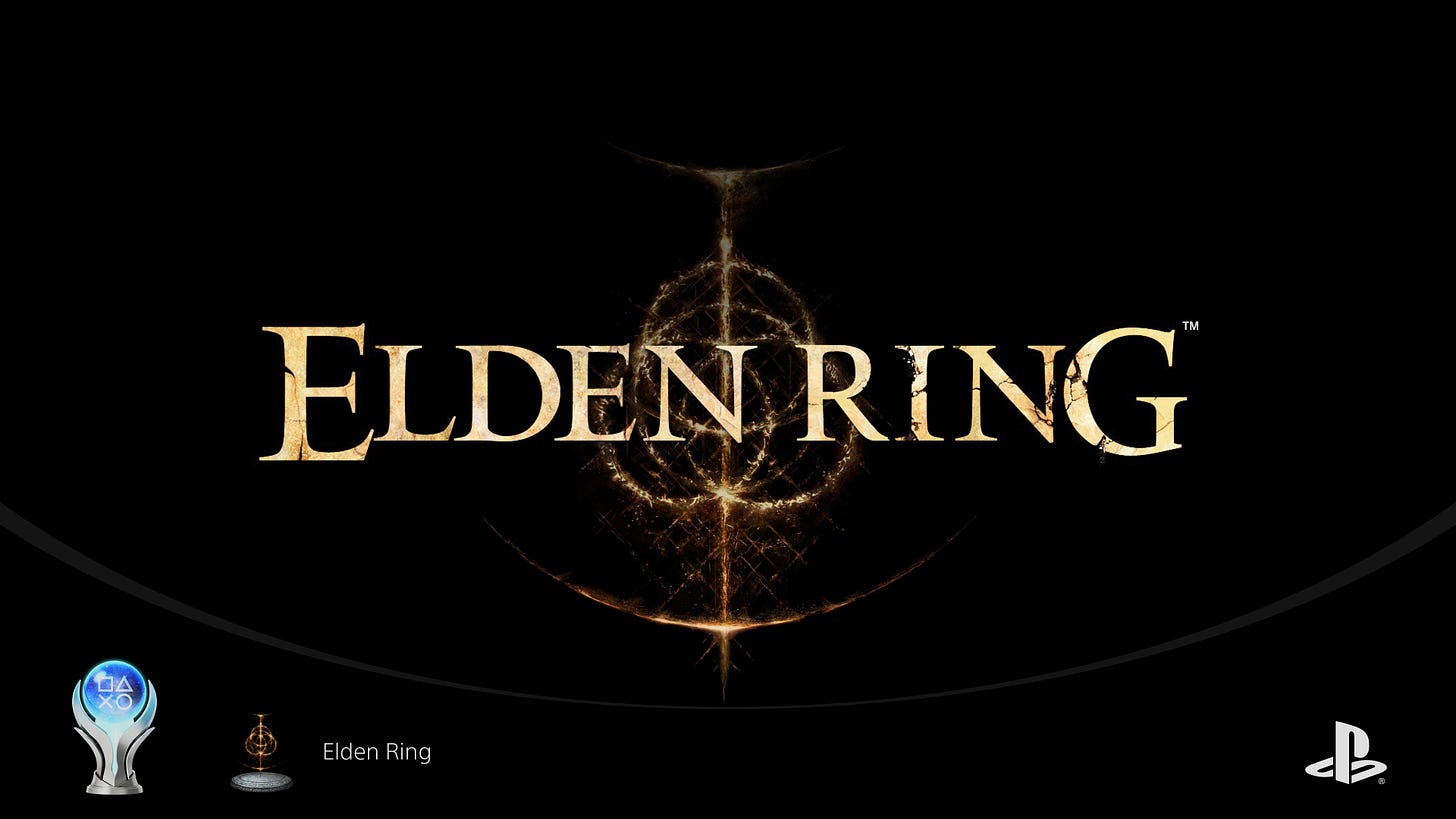Elden Ring Review
This is the best open world game ever made. A master class in open world design
I’ve done it. After hundreds of hours played, thousands of enemies killed, and too many deaths to count, I have finally beaten (and gotten the platinum for) Elden Ring. I won’t tease you and dance around my final thoughts. I think it’s a true masterpiece. Over the past couple of months with this game, I’ve been exposed to dozens upon dozens of unique moments that evoked pure shock, awe, and joy. I don’t think the game is perfect, no game is, but it feels pretty damn close in a lot of ways. While I’m still on the high of my journey, I want to do my best to break down how FromSoftware managed to manufacture this magic. Now buckle in, sit tight, and join me as I reminisce on my time in the Lands Between.
What even is Elden Ring? To try and make it as simple as possible: Elden Ring is a single-player open-world RPG with multiplayer aspects. While it is primarily focused on single-player gameplay, there are online co-op elements where people can play together, and there is a classic FromSoftware feature that allows players to write helpful (or unhelpful) messages on the ground that will appear in other players’ games. The developer is famously (or infamously, depending on who you ask) known for creating extremely challenging games headlined by extravagant and brutal boss fights.
As for the plot, it is a high fantasy story (think Lord of the Rings) about a world that has been thrown into chaos by an event known as “the shattering of the Elden Ring”. This has affected the world and everyone in it, including the gods and demigods that rule over the lands. Your character has come to take advantage of this chaos and become the new ruler by defeating characters known as Shardbearers. I can not overstate how much of a gross oversimplification this is. After I consumed several hours of lore videos immediately after completing the game, I realized that the story runs deep. It’s honestly pretty interesting, but I’m going to spare the lore talk for this review.
So what is all the hype about? Why can’t people stop raving about this game? Well, it’s because this is, in my opinion, the best open-world game ever created. Elden Ring is able to set you loose in a world that is just unparalleled in quality. By the end of every session, whether it was 30 minutes or several hours, I felt like I had been on an adventure. There are many different components that FromSoftware uses to achieve this, but let’s start with the map itself.
The Lands Between is one of the biggest video game maps I’ve ever traveled. It’s absolutely massive, and just when you think you’ve seen it all, the game adds 25% more content. And despite being so large, it feels like there are somehow unique points of interest every 100 feet. The map feels like it was created to serve a world of storytelling as opposed to being some uninspired area for the player to walk around in. Every area feels like it was naturally crafted through some artificial Big Bang set off within the game. There are caves hidden behind bushes in nondescript corners of the map. Some towns have been operating in isolation for who knows how long. There’s a tiny well that leads to one of the biggest and most complex dungeons in the game. There are areas so well hidden that most players will never find them unless they look up how to get to them online. It’s almost as if the developers and designers don’t care if most of the game is never seen. While that sounds absurd, it truly makes the world feel like several lifetimes’ worth of events have played out before the player has even arrived. It’s a map that truly rewards curiosity and exploration. Very rarely did I go to explore something in the distance that didn’t result in some incredibly engrossing impromptu expedition or battle.
It’s hard to explain, but adventuring is different in Elden Ring. Unlike most RPGs, the NPCs and text you find in the game don’t exist to further the player’s progress. First and foremos,t they exist to fill in some piece of the lore. I’ll get into my feelings on that later, but even without the game holding my hand and telling me where to go, the areas and events within them were enough to keep me going for countless hours. It’s as if someone dropped you off in Disneyland for the first time and told you to have fun. You wouldn’t need to know the backstory of every character and theme of the park because the park is entertaining without that. Elden Ring is the same way. You don’t need a ton of guidance when the game throws you into a wizard academy, a spooky catacomb dungeon, or a giant lake guarded by a dragon. The map is designed in such a way that there is always something on your screen that will compel you to explore a little further. It might be a castle in the distance, it might be a light source at the end of a tunnel, or it may even be a particularly ominous cliff edge overlooking a secret cave. The game is always encouraging you to explore just a little more.
While I would argue that the open-world exploration is like nothing that has ever been done in a video game, the rest of the mechanics are more familiar. The combat is mostly iterative, building on the foundation of the system from the Dark Souls franchise. That means the player selects one of several classes and relies on timing, blocking, and dodge rolling to prevail in most battles. I stuck with a magic-focused melee build in my playthrough, and although I enjoyed a lot of the boss fights, the combat definitely felt like it was missing a special sauce. In my opinion, Elden Ring’s combat doesn’t do anything particularly exciting, and sometimes it can feel more frustrating than rewarding. Like the times my character would go into a 4-second animation, scratching his head in a crucial moment, whenever I would try and use a spell without enough MP, or how the camera could sometimes bug out when I was trying to lock on in dire situations. Even so, I will say that Elden Ring does a great job at giving players tools to alleviate the difficulty of the game. The spirit ashes switch things up by allowing players to summon an NPC companion to help fight in most boss battles, there are NPC summon signs outside of the major boss fights, there are tons of checkpoints/fast travel locations known as Sites of Grace littered across the map, and often you will even find Stakes of Marika near tough areas to allow for an even more convenient checkpoint.
The dozens and dozens of boss fights you encounter in this game, while striking a similar tone to other FromSoft games, are pretty rad. Many times I would just be wandering the open world, and before I realized it, something would roll up on me as its giant red health bar appeared at the bottom of the screen. There are over one hundred boss fights in the game, and many of them felt exciting, distinctive, and somewhat manageable. Many of the fights are accompanied by an epic and fantastical score that often gave me the extra little motivation I needed to finish off a tough enemy. While the game didn’t feel too difficult in comparison to some other games like Sekiro, it definitely forces you to learn how to fight and read the opponent’s attack pattern. By the time I finished the game, I felt like I could conquer anything and everything the game could throw at me.
The quest system is something else that is somewhat expected from FromSoft games. The quests are largely nebulous, with no major guidance to help the player progress. Outside of the main story, which the game gives you a general nudge for, there are no quest logs, no golden paths, no markers, nothing. You kind of have to just figure it out. This was one of my biggest pet peeves with the game. I understood maybe 25-30% of all of the information I came across in this game. I didn’t know what characters were telling me or why they were telling me it. I didn’t fully understand what the true conflict of the game was, or how what I was doing fit into that conflict. With how vast and deep the game is, it felt seemingly impossible to understand how to progress (or even start) most quests in the game. Not only that, but many of the quests themselves were rather lackluster. A lot of the time, you find an NPC, talk to them for a bit, they disappear, you have to find them again somewhere on this giant map, and then rinse and repeat. Rarely did the quests themselves lead to events that justified the cryptic cat-and-mouse game the quest system plays; luckily, side quests aren’t a requirement to complete or enjoy the game. With how interesting the lore in the game was, I would have loved for FromSoft to add a proper logging and note-taking system like every other RPG. I know some hardcore fans would probably disagree with me, but having to look up guides for a good chunk of the game was one of the few things that would take me out of the moment.
These complaints were just small blips on an overall positive experience. I got lost in this game. I didn’t care how long it would take me to finish, and I didn’t ever start to feel any repetitiveness from the game’s systems. I was always dying to see what was in the castle in the distance or what was over that next hill. I can only think of a handful of RPGs that kept me enthralled, like Elden Ring, and none of them even come close to matching the amazing highs that many of the adventures in Elden Ring provide.
The release of Elden Ring marks a historic moment in gaming. I believe it will be a game that influences the video game industry for generations to come, just like Breath of the Wild did before it. It’s a game that manufactures watercooler moments from start to finish. It’s a game that has redefined what open-world games can be. For people hesitant but curious, I implore you to give this game a try. I highly recommend looking at the gameplay with an open mind. For open-world fans, adventure fans, fantasy fans, and players who like a good challenge, this game should not be skipped. That’s why I’m giving this game a 10.


